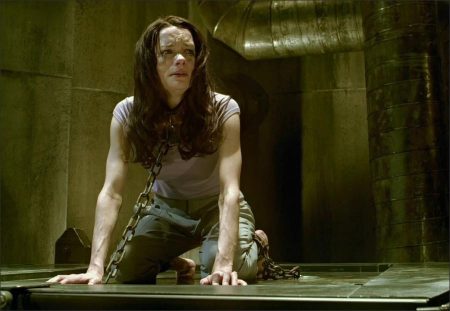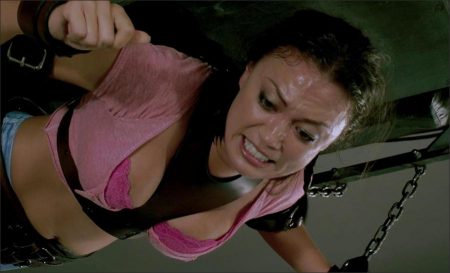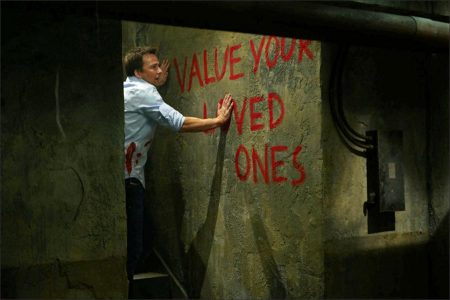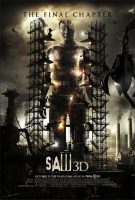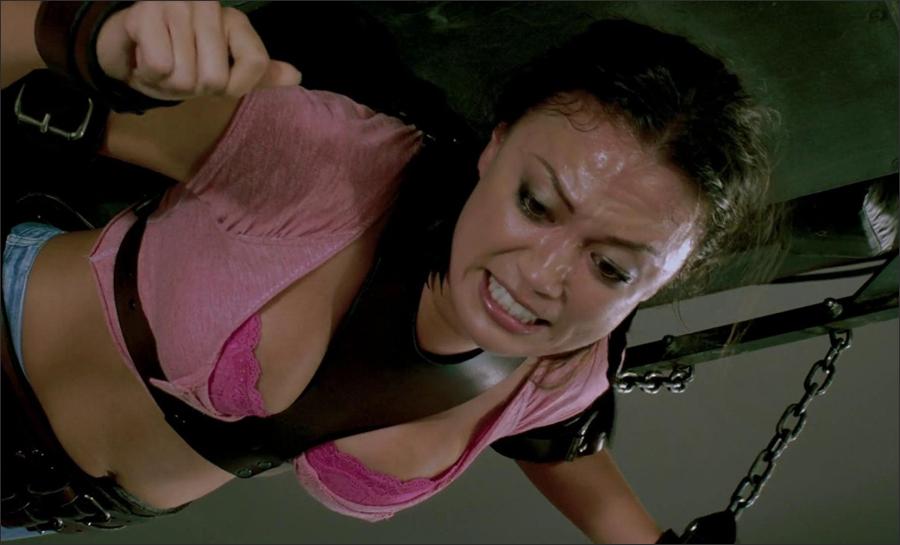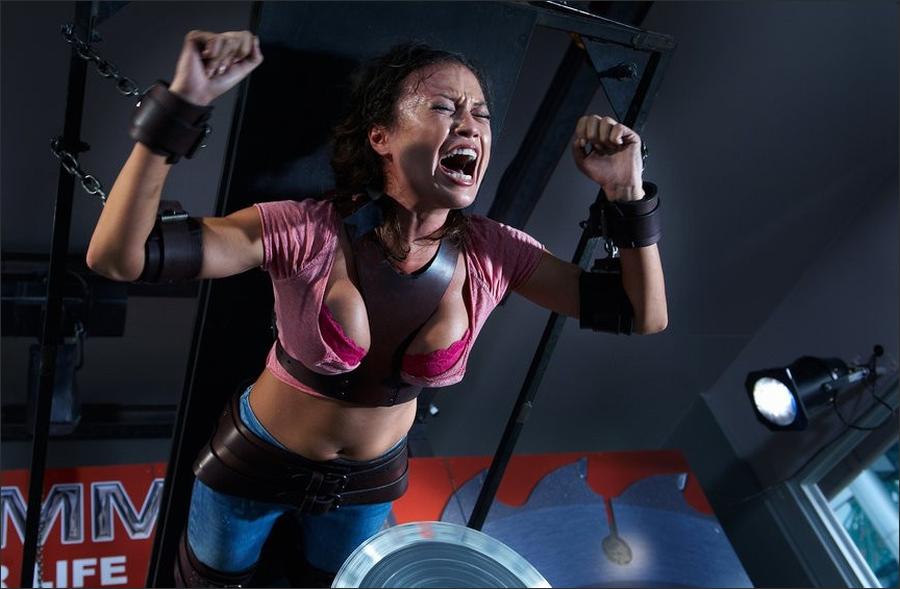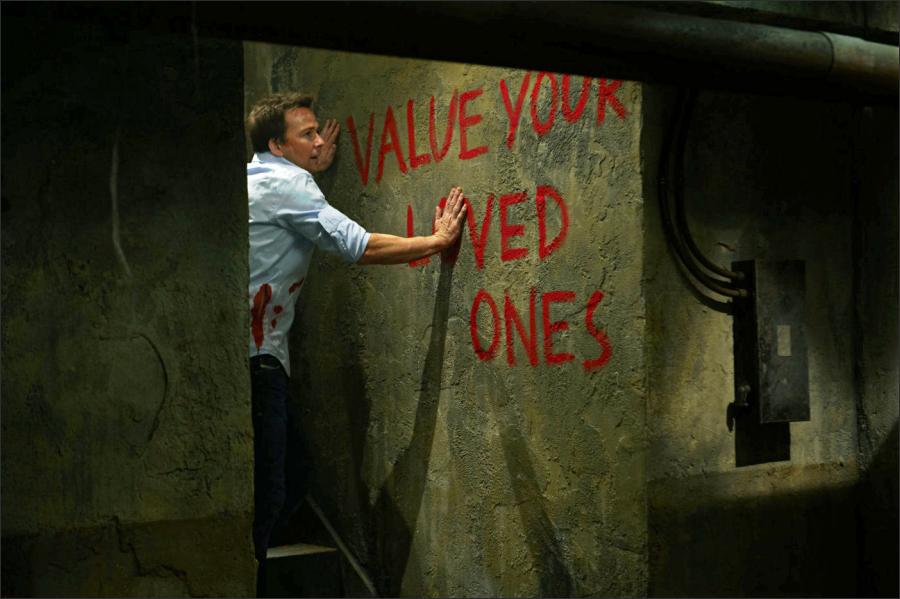All About Saw 3D – The Final Chapter
David Hackl – production designer of the second, third and fourth films and helmer of “Saw V” – directed the seventh film in the franchise where people will probably end up in Jigsaw’s death traps and only have a certain amount of time to make a tough decision if they don’t want to die.
The first theatrical feature to be shot exclusively on the cutting-edge SI-3D digital camera system, Saw VII 3D brings the horrifying games of Jigsaw to life like never before. The film stars Tobin Bell, Costas Mandylor, Betsy Russell, Sean Patrick Flanery. Saw VII 3D is directed by Kevin Greutert, produced by Oren Koules, Mark Burg and Gregg Hoffman. Saw VII 3D is a Lionsgate Release.
Those words, uttered two minutes into 2004’s SAW, express the primal emotions – the hopeless confusion, the awful sense of powerlessness and sheer, panic-stricken terror – that lie at the heart of Lionsgate and Twisted Pictures’ SAW franchise; emotions that are a key to its phenomenal success. The SAW films follow the machinations of Jigsaw, a terminally ill cancer patient with an exacting moral agenda and a genius for gruesome games of survival, “played” with those he believes have ceased to value and appreciate the gift of life.
The approach of Halloween each October has brought a new SAW title, replete with gruesomely inventive traps and tantalizing clues about Jigsaw’s master plan. To date, the six SAW titles have taken in over $730 million in worldwide theatrical box office, DVD sales have exceeded 30 million units, and SAW has earned an official place in the Guinness Book of Records has as the “Most Successful Horror Movie Series.”
Furthermore, SAW has picked up the baton from classic horror series such as HALLOWEEN and NIGHTMARE ON ELM STREET to become a part of the pop cultural landscape, referenced in mainstream entertainment like “The Simpsons” and known even to non-horror fans. Now, seven years after Jigsaw introduced himself to the world, the final pieces of his puzzle will fall into place in the last of this SAW series, SAW 3D. SAW 3D is the first theatrical feature to be shot exclusively on the cutting-edge SI-3D digital camera system, which allows for the extremely close, fast shooting style that is a SAW hallmark. It includes the most traps of any SAW film, eleven; and even answers a question raised back in SAW: what happened to Dr. Gordon, last seen crawling away (minus one foot) from Jigsaw’s subterranean chamber of horrors?
SAW 3D director Kevin Greutert has been with the franchise from the beginning, having edited the first five features before moving into his current role with SAW VI. Greutert thinks part of the franchise’s enduring appeal lies in a storytelling approach that deviates from the horror norm. “Most slasher films introduce the victims and then kill them off, one by one, and there’s not much going on beyond that. SAW is very different. The plotting is very intricate. We always have at least three central character storylines that are interwoven throughout the movie, and if you look at the seven films as whole, it’s even richer. So many ideas, so much talent go into the making of these films. And I think the films have evolved and are each unique, from one to the next.”
Producer Oren Koules explains that the filmmakers have kept in mind both the dedicated fan and the casual viewer in conceiving the SAW sequels. “We’ve taken a two-pronged approach in doing every SAW film. We want to make sure we take care of our loyal fans that come to every single movie and live and breathe our films. We really spend hundreds of hours going, ‘Okay, if someone dies, how does it affect three movies ago? How does it affect two movies from now?’ And we also want to make sure that for someone who’d heard about them and just decided to walk into, say, SAW IV, that it’s a great movie from beginning to end.”
Producer Mark Burg goes on to note another key factor in SAW’s longevity: actor Tobin Bell, who has portrayed Jigsaw, a/k/a John Kramer, throughout the series. “Tobin’s contribution to the franchise is enormous. In SAW, he’s lying motionless, ostensibly dead, on a cement floor for virtually all of the movie; now he’s writing a lot of his own dialogue. He is the character. He is a cornerstone of the success of SAW.” Without question, Bell’s Jigsaw has become one of most indelible characters in modern horror, and the actor has received glowing praise from critics. In a September 7, 2007 essay on contemporary horror movies in the L.A. Weekly, critic Luke Thomson wrote, “Tobin Bell’s performance as Jigsaw is a wonder; he’s the best ‘real-world’ horror antihero since Anthony Hopkins first played Hannibal Lecter.”
Bell describes the role as a rewarding creative adventure. “You don’t often get an opportunity to play the same character in seven films, so this has been fantastic,” he says. “In terms of horror villains, I think he’s been a richer character than most because of the concepts that the writers have come up with regarding his actions. John Kramer talks about things that we all think about, like appreciating your blessings and relationships with other people, and how friends can sometimes climb over friends to get what they want. I never play him like he views himself as an evil guy, because he doesn’t.”
The SAW series is its own saga, of course. Directed by James Wan and written by Leigh Whannell from a story by Wan and Whannell, SAW made its world premiere at the 2004 Sundance Film Festival as part of the Festival’s popular “Park City at Midnight” program. Festival Director Geoffrey Gilmore, who programs the annual event, recalls that he was impressed by the first-time filmmakers’ command of both form and theme. “SAW grabbed the viewer from the first frame; it was bold, cleverly constructed and flat-out terrifying,” he comments. “But what really set SAW apart was its moral seriousness. This movie didn’t just want to scare you, it wanted to make you think about what you would do to stay alive. In today’s world, that is not a trivial thing to contemplate — either as an individual or as a member of society.”
As the SAW series continued, the films tunneled further into Jigsaw’s beliefs and worldview. Says series co-creator Whannell, who wrote or co-wrote the screenplays for SAW, SAW II and SAW III, “Jigsaw’s cancer has led him to think very hard about what it means to be alive and how close we are to death at any given time. But he’s not someone who stops with a simple ‘carpe diem’ and a trip to Europe. The concept of life’s value becomes a springboard to look at other personal moral choices, like forgiveness versus retribution. Jigsaw keeps digging into these issues, which become grist for his games. And as twisted as the games are, his intention is to help people. Between his philosophical bent and his sick take on altruism, I like to think Jigsaw is somewhat unique in the horror universe.”
The SAW franchise has been part of a wave of horror films that have drawn favorable comparisons to the independent horror cinema of the 1970s, a connection highlighted in a Summer 2007 series at New York’s Museum of the Moving Image, entitled “It’s Only a Movie: Horror Films from the 1970s and Today.” The six-weekend retrospective drew a thru-line between films like Wes Craven’s LAST HOUSE ON THE LEFT (1972) and Tobe Hooper’s TEXAS CHAINSAW MASSACRE (1974), which shocked audiences of their day with envelope-pushing gore and disturbing explorations of human behavior; and the films of the SAW age, including Darren Lynn Bousman’s SAW II, which contain images and stories that have left today’s viewers just as stunned and terrified — and eager for more — as the moviegoers of the 1970s. “It’s Only a Movie” presented double features that paired films from each era, with SAW II sharing a bill with Stanley Kubrick’s A CLOCKWORK ORANGE.
Announcing the series in June 2007, the Museum’s Chief Curator, David Schwartz said, “These movies are of considerable aesthetic and cultural interest, clearly reflecting the fears of contemporary lives…. Of course we are aware that these films contain disturbing, often shocking images, but they are powerful precisely because they tap into our deepest anxieties.”
Assistant Curator Livia Bloom also weighed in. “The filmmakers in this series use the horror genre as a commercial framework to make smart, often subversive films. Their work examines deep psychological concerns, and comments on social and political issues of the day.” Bloom noted that in SAW’s “startling scenes of torture,” she found “reflections of a life during a time of war and turmoil.”
The thematic and stylistic consistency of the SAW series owes much to the stewardship and participation of a core team, many of whom have been with the series for most, if not all of, its life. In addition to Burg, Koules and Greutert, this team includes SAW originators Wan and Whannell; the late producer Gregg Hoffman; and executive producers Daniel Heffner, Stacey Testro, Peter Block and Jason Constantine; director of photography David A. Armstrong, who laid the creepy visual template for the series and shot the first six installments; screenwriters Patrick Melton and Marcus Dunstan, who have delved into psychology and mayhem since SAW IV; composer Charlie Clouser, a onetime member of the band Nine Inch Nails; costume designer Alex Kavanagh; and casting director Stephanie Gorin. Writer/director Darren Lynn Bousman joined the team with the critical sequel SAW II and went on to helm SAW III and SAW IV. Production designer David Hackl created Jigsaw’s universe for the first four films in the series before directing SAW V, at which time current production designer Tony Ianni (V, VI, 3D) joined the crew.
Saw 3D – The Final Chapter (2010)
Directed by: Kevin Greutert
Starring: Tobin Bell, Costas Mandylor, Gina Holden, Betsy Russell, Tanedra Howard, Sean Patrick Flanery, Naomi Snieckus, Anne Lee Greene, Rebecca Marshall, James Van Patten, Laurence Anthony
Screenplay by: Marcus Dunstan, Patrick Melton
Production Design by: Anthony A. Ianni
Cinematography by: Brian Gedge
Film Editing by: Andrew Coutts
Costume Design by: Alex Kavanagh
Set Decoration by: Liesl Deslauriers
Art Direction by: Peter Grundy
Music by: Charlie Clouser
MPAA Rating: R for sequences of grisly bloody violence and torture, and language.
Distributed by: Lionsgate Films
Release Date: October 29, 2010

